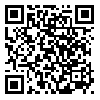Volume 2, Issue 6 (2009)
LCQ 2009, 2(6): 149-183 |
Back to browse issues page
1- Tarbiat Modares University
2- Associate Professor, Department of Linguistics, Tarbiat Modares University
3- Ph.d student of Persian language and literature, Tarbiat Modares Universitstudent of Persian language and literature, Tarbiat Modares University
2- Associate Professor, Department of Linguistics, Tarbiat Modares University
3- Ph.d student of Persian language and literature, Tarbiat Modares Universitstudent of Persian language and literature, Tarbiat Modares University
Abstract: (19560 Views)
Discourse analysis has emanated from ideas os scholars od Linguistics, semiotics, hermeneutics and the theories of Michel Foucault (1926-1992), but in contrast to the aforementioned methods, it cover the two aspects of the text: form and meaning and so it is a comprehensive approach for text analysis. Scholars like Fairclough, Wodak, Van Dijk, Fowler and Kress played an important role in introducing and promoting critical discourse analysis as a new approach to text analysis. In this research we have used Norman Fairclough’s approach. In the present study, it was tried to analyze Sovashoon of Simin Daneshvar. In so doing, we discussed the views of the author, and using an innovative approach, we discovered various semantic and thematic layers of meanings closer to this novel. It was concluded that Daneshvar,with her special approach to the political and social changes of her time ,has connected the politico-social factors to mythological ones. This approach is specific to her, different with others' and so we can consider it as her own unique ideology. From a critical discourses analytic perspective, Simin Daneshvar, in her writings, made use of specific terms, epical and mythical dimensions and its connection with religion while generalizing these elements and connecting it to our era, has sought to create an independent Iranian identity. She managed to create an anti-imperialistic hero from the working class and naturally promoted women’s role in the contemporary novels from a housewife to a reformer and activist in the socio-political areas.
Keywords: Sovashoon, Critical Literature, Critical discourse analysis, Norman Fairclough, Simin Daneshvar
Subject:
Street literature
Received: 2009/10/26 | Accepted: 2010/01/2 | Published: 2010/03/9
Received: 2009/10/26 | Accepted: 2010/01/2 | Published: 2010/03/9
| Rights and permissions | |
 |
This work is licensed under a Creative Commons Attribution-NonCommercial 4.0 International License. |



